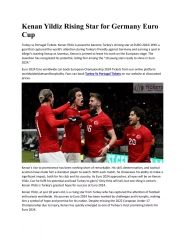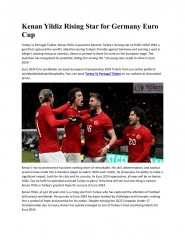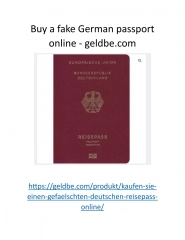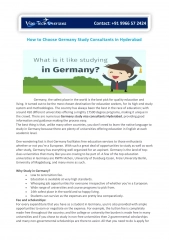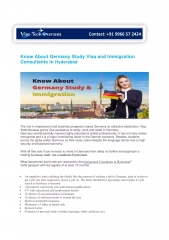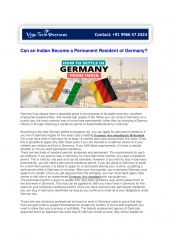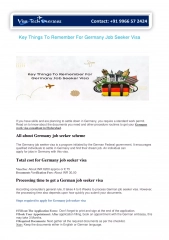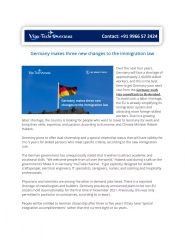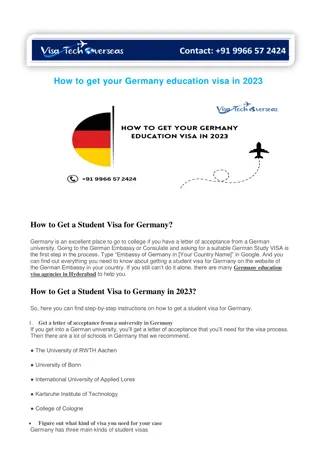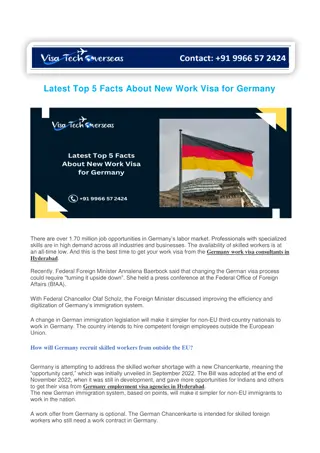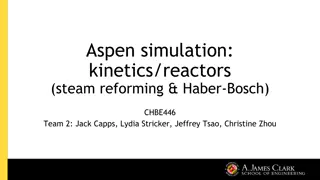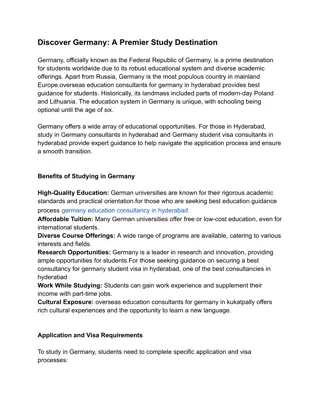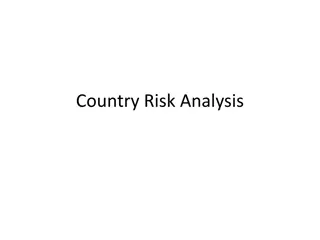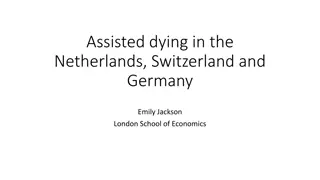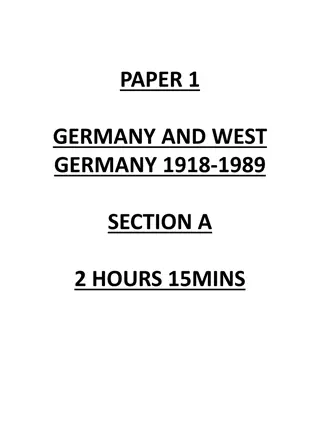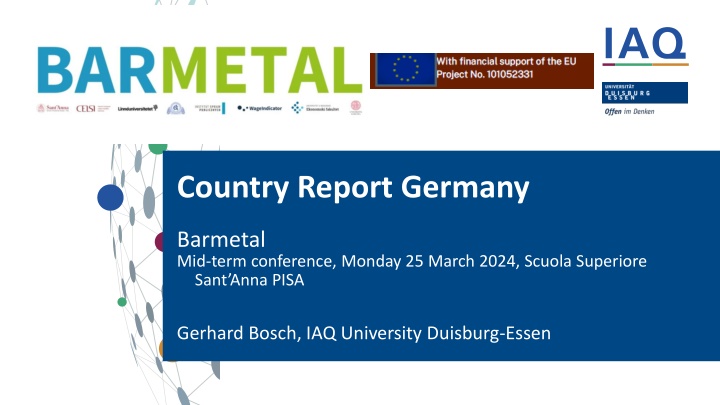
Employment and Industrial Relations in German Metal Industry
Discover the employment and industrial relations landscape in Germany's metal industry, highlighting key trends such as sector GVA share, workforce qualifications, collective bargaining coverage, and the role of unions in shaping policies for digitalization and decarbonization.
Download Presentation

Please find below an Image/Link to download the presentation.
The content on the website is provided AS IS for your information and personal use only. It may not be sold, licensed, or shared on other websites without obtaining consent from the author. If you encounter any issues during the download, it is possible that the publisher has removed the file from their server.
You are allowed to download the files provided on this website for personal or commercial use, subject to the condition that they are used lawfully. All files are the property of their respective owners.
The content on the website is provided AS IS for your information and personal use only. It may not be sold, licensed, or shared on other websites without obtaining consent from the author.
E N D
Presentation Transcript
Country Report Germany Barmetal Mid-term conference, Monday 25 March 2024, Scuola Superiore Sant Anna PISA Gerhard Bosch, IAQ University Duisburg-Essen
Employment and Industrial Relations Industry's share of GVA (with 24%) in Germany higher than in most other industrialised countries (USA 14%, FR 13.3%, IT 20.5%, UK 13.4%, Japan 23.4%) Metal industry with 3.934 million employees (2022) largest sector: share of GVA 15.2%. Metal-industry - predominantly qualified workforce: 66,4% skilled, 10,5% unskilled, 18.4% tertiary education skilled means 3 year standardized vocational apprenticeships Decrease of the coverage by collective agreements in DE and trade union density, less in the metal industry. Institutional power through co-determination Industry wide CA s in the metal industry strong coordination and enforcement of CA s through omnipresent works councillors (except SME s) Indicators of collective bargaining policy in Germany and in the metal industry in per cent (2019 - 2022) Trade union density Employer s density Coverage byCA s Bargaining levels Sectoral, company, plant Sectoral, company. plant Metal-industry approx. 40,0 46,6% (62,9%) * approx. 64,0 Overall economy 16,3 67,9 49,0 *With collective bargaining coverage in brackets including companies without collective bargaining coverage 2
Digitalisation and Decarbonisation The social dialogue in national discourses Term Industry 4.0 invented by German industry to focus on a common goal Unions represented in the Industry 4.0 platform at the Federal Ministry of Economics, the Coal Commission, the National Hydrogen Council and the Committee for the Future Fund for the Automotive Industry. Broad agenda in these commissions: Training and retraining, technical projects, the socially responsible phase-out of lignite by 2038, financingof regional transformation networks with up to 200 million. Transformation networks have now been established in 27 automotive regions, 25 of which were initiated by IG Metall locals Social partners decide on the occupational curricula in the dual apprenticeship system: Last reform of the metal occupations in 2018 included an update of the content about Industry 4.0. Next reform in work: (Company case studies in the evaluation of the reform show that the tasks of skilled workers are rarely characterised solely by metalworking, electrical engineering or information technology. The authors therefore propose the development of a new qualification profile focussing on industrial mechatronics). Paradigm shift in national labour market policy from Work-First to Train-First: At the initiative of IG Metall, a training allowance was introduced for companies in which more than 20% of employees require further training due to the transformation. 3
Role of collective bargaining The protection of employees against the risks of structural change through industry-wide collective bargaining has a long tradition In the 1960s and 1970s CA s on rationalisation protection, which gave priority to internal transfers and further training over redundancies Since the 1990`s following the Volkswagen example all regional collective agreements in the metal industry allow for temporary reductions in working hours to 30 hrs per week Since the early 2000 s agreements on individual entitlement to an annual qualification discussion with the line manager, in which the level of qualification and necessary further training measures are recorded evaluation shows low effects Between 2004 and 2020 dominantly use of opening clauses: in exchange for location or investment commitments and a waiver of compulsory redundancies longer working hrs and lower wages Since 2016 experimental trade union projects to get out of the defensive situation and to develop strategic competence in the design of DAD 2021 IG Metall succeeded in negotiating framework collective agreements in all regions for the agreement of company future oriented CA s 4
Future oriented collective agreements (FOCA) The first FOCA concluded for Volkswagen AG in 2009: protection against dismissal, two innovation funds, a high degree of working time flexibility, strong works council involvement, needs-based training, ambitious targets for innovative forms of work organisation. Since 2020 many new FOCA s on withdrawal of the closure decision, preservation of the site (Faurecia) Exclusion of compulsory redundancies participation: involvement of IG Metall and works councils in the early involvement strategic and economic direction of the company e.g. Bosch Mobility and Schaeffler AG collective qualification agreements for planned reorganisations (Atos, Trilux) differentiation regulations in favour of IG Metall members additional resources for IG Metall to train its shop stewards and informing its members 5
Findings in comparative view (I) Weakening of social dialogue through declining coverage of CB s but compared to Eastern Europe high levels of coordination especially in the metal industry with strong and not fragmented actors (IG Metall and Gesamtmetall) institutional resources through works councillors At national level unions represented in national platforms on DAD with clear impact (financing of 25 regional tranformation networks) not pro forma consultations like in PL or HU 3 years standardized apprenticeship training / modernization by social partners: similar to DK / Because of differences in initial training systems figures on particitaption in LLL across countries not comparable 6
Findings in comparative view (II) Polititicalwindows of opportunities in the last two governments: Unions with SPD and the Greens driver in the paradigm shift in labour market policy to Train First DE now has a comparable well designed and financed system of LLL with an active labor market policy like in DK and rant/loan systems for adult learning like in DK and SWE After a period of concession bargaining IG Metall is now trying to proactively shape DAD in companies with future oriented collective agreements stronger involvement in co-management than in other countries but only in big companies 7


